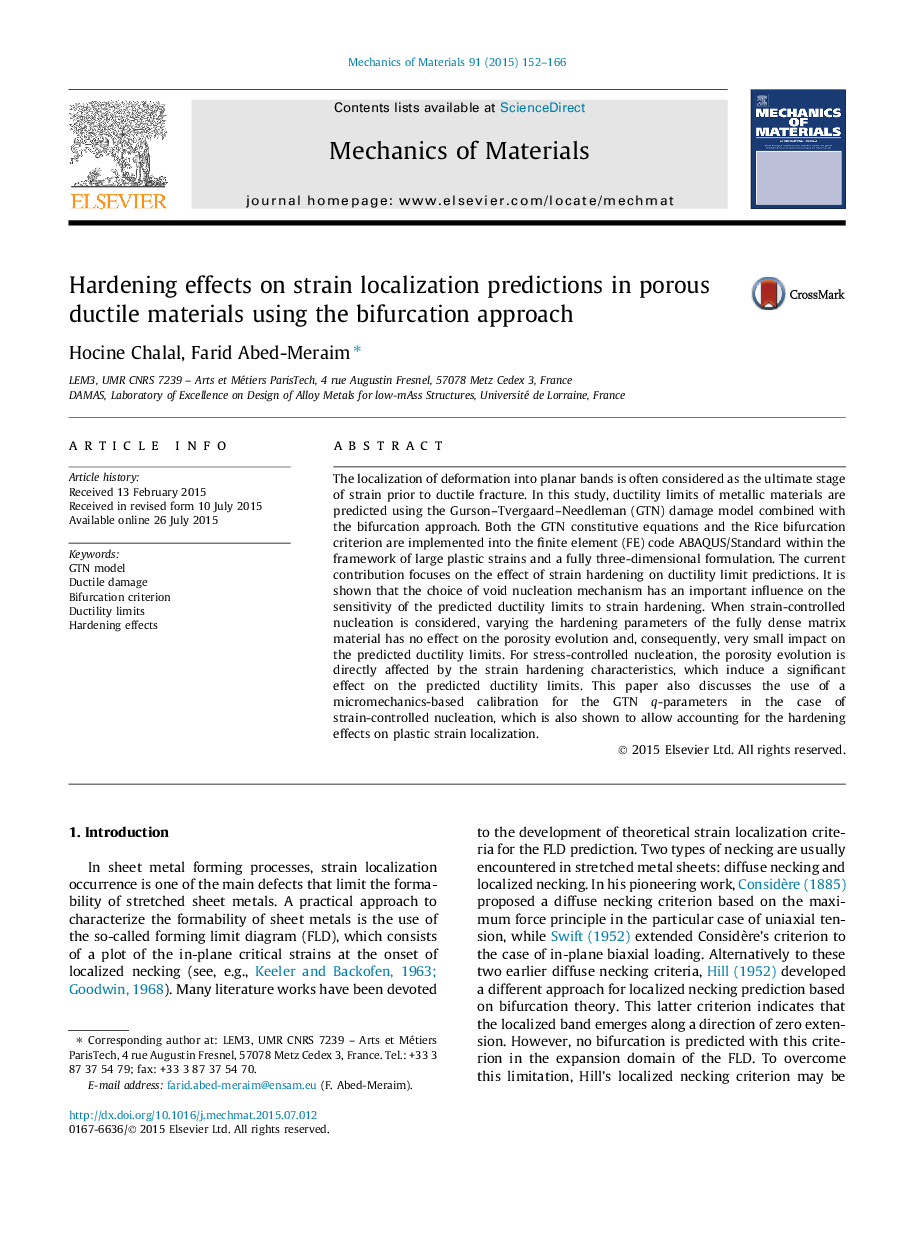| کد مقاله | کد نشریه | سال انتشار | مقاله انگلیسی | نسخه تمام متن |
|---|---|---|---|---|
| 802688 | 1467449 | 2015 | 15 صفحه PDF | دانلود رایگان |
• The GTN model is combined with bifurcation theory to predict ductility limits of porous materials.
• The sensitivity of ductility limit predictions to the strain hardening characteristics is investigated.
• Strain hardening effects on strain localization depend on the selected void nucleation mechanism.
• Non-normality induced by stress-controlled nucleation allows reproducing strain hardening effects.
• Micromechanics-based q-parameter calibration allows strain hardening effects to be accounted for.
The localization of deformation into planar bands is often considered as the ultimate stage of strain prior to ductile fracture. In this study, ductility limits of metallic materials are predicted using the Gurson–Tvergaard–Needleman (GTN) damage model combined with the bifurcation approach. Both the GTN constitutive equations and the Rice bifurcation criterion are implemented into the finite element (FE) code ABAQUS/Standard within the framework of large plastic strains and a fully three-dimensional formulation. The current contribution focuses on the effect of strain hardening on ductility limit predictions. It is shown that the choice of void nucleation mechanism has an important influence on the sensitivity of the predicted ductility limits to strain hardening. When strain-controlled nucleation is considered, varying the hardening parameters of the fully dense matrix material has no effect on the porosity evolution and, consequently, very small impact on the predicted ductility limits. For stress-controlled nucleation, the porosity evolution is directly affected by the strain hardening characteristics, which induce a significant effect on the predicted ductility limits. This paper also discusses the use of a micromechanics-based calibration for the GTN q-parameters in the case of strain-controlled nucleation, which is also shown to allow accounting for the hardening effects on plastic strain localization.
Journal: Mechanics of Materials - Volume 91, Part 1, December 2015, Pages 152–166
